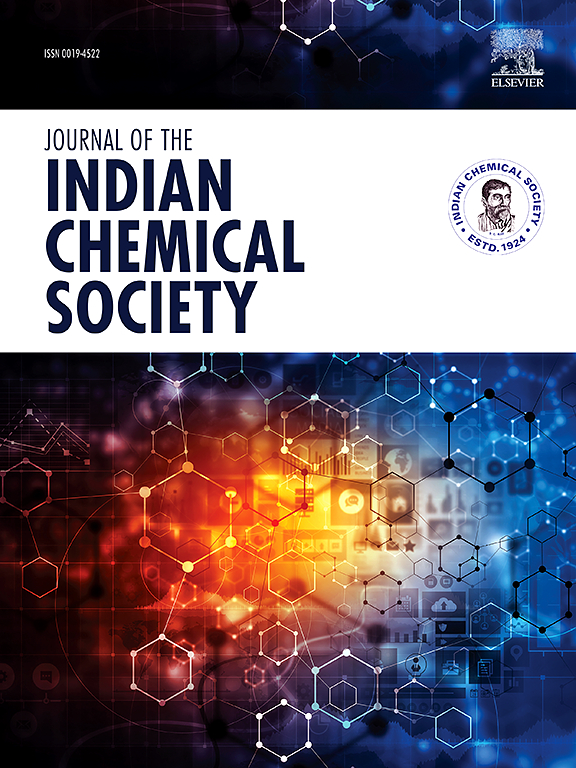Investigation of photoactivated gas sensing properties in In2S3 thin films fabricated via spray pyrolysis
IF 3.2
4区 化学
Q2 CHEMISTRY, MULTIDISCIPLINARY
引用次数: 0
Abstract
This study investigates the gas-sensing properties of indium sulfide (In2S3) thin films. The specific surface area of In2S3 thin films was found to be 8.63 m2 g−1. The half-bridge method estimates the electrical parameters of the films. Films show 6.7 × 102 Ω m and −0.00156/°C resistivity and TCR, respectively. Researchers looked at how In2S3 reacted with different gases, like CO2, NO2, H2S, NH3, LPG, and ethanol, at different working temperatures. Authors did this in the presence of IR light on thin films of In2S3. Films show maximum sensitivity to CO2 gas at 90 °C operating temperature. The results showed a big increase in sensitivity when photoactivated. The formation of electron-hole pairs facilitates the binding and release of gases. We also examined the influence of IR intensity, gas concentration, and response-recovery times. The In2S3 thin films made by spray pyrolysis work well as gas sensors when activated by light.

喷雾热解法制备In2S3薄膜的光活化气敏性能研究
本文研究了硫化铟(In2S3)薄膜的气敏性能。In2S3薄膜的比表面积为8.63 m2 g−1。半桥法估计了薄膜的电参数。薄膜的电阻率为6.7 × 102 Ω m, TCR为- 0.00156/°C。研究人员观察了In2S3在不同工作温度下与不同气体(如CO2、NO2、H2S、NH3、LPG和乙醇)的反应。作者在红外光照下对In2S3薄膜进行了实验。在90°C的工作温度下,薄膜对CO2气体表现出最大的灵敏度。结果显示,当光激活时,灵敏度大大增加。电子-空穴对的形成促进了气体的结合和释放。我们还研究了红外强度、气体浓度和响应恢复时间的影响。采用喷雾热解法制备的In2S3薄膜在光激发下具有良好的气体传感器性能。
本文章由计算机程序翻译,如有差异,请以英文原文为准。
求助全文
约1分钟内获得全文
求助全文
来源期刊
CiteScore
3.50
自引率
7.70%
发文量
492
审稿时长
3-8 weeks
期刊介绍:
The Journal of the Indian Chemical Society publishes original, fundamental, theorical, experimental research work of highest quality in all areas of chemistry, biochemistry, medicinal chemistry, electrochemistry, agrochemistry, chemical engineering and technology, food chemistry, environmental chemistry, etc.

 求助内容:
求助内容: 应助结果提醒方式:
应助结果提醒方式:


